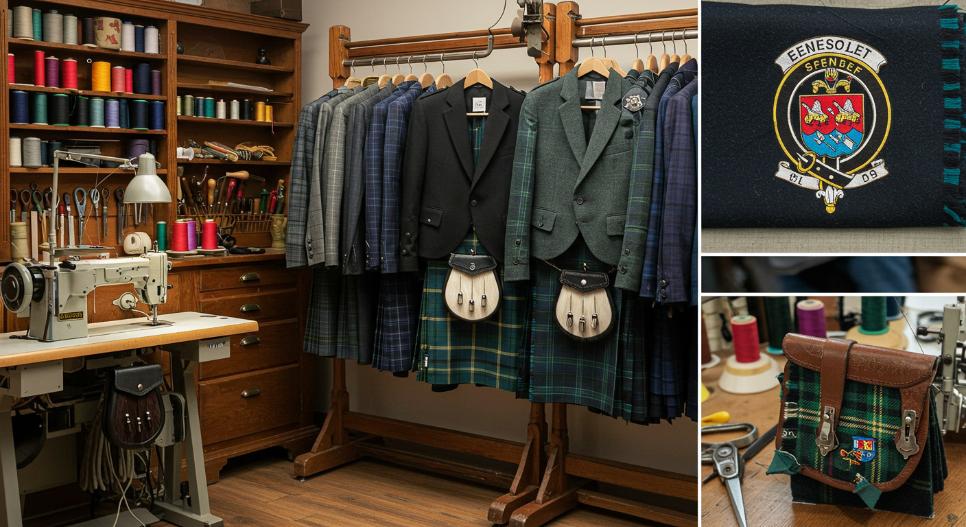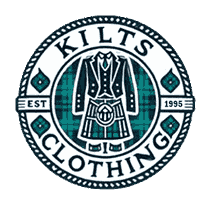Personalizing Your Formal Kilt: Customization Options to Reflect Individual Heritage

Kilts are more than just garments—they represent Scottish culture, history, and personal identity. Over the years, kilts have evolved into versatile formal wear that goes beyond mere tradition. Today, they serve as a canvas for individual expression, especially regarding customization. Whether attending a wedding, a graduation, or simply seeking a garment that reflects your heritage, a personalized formal kilt can make a powerful statement. This article explores how you can customize a kilt to reflect your style, family history, and cultural pride.
1. The Importance of Personalizing Your Formal Kilt
A formal kilt is not just about wearing an article of clothing; it's about embracing your heritage, making a statement, and honoring traditions. Customizing a kilt allows you to celebrate who you are and where you come from. Whether you opt for subtle tweaks or dramatic changes, the result will be a garment that is uniquely yours.
The significance of personalizing a kilt lies in its connection to cultural pride. For many, kilts are more than just formal wear—they are a way to pay homage to Scottish ancestry, family traditions, and important milestones in life. A personalized kilt can also add a layer of meaning to special events like weddings, graduations, or family reunions, ensuring that your formal attire is as meaningful as it is stylish.
2. Choosing the Right Tartan: A Reflection of Heritage and Identity
One of the most important aspects of a custom kilt is the tartan. Tartan patterns are often deeply tied to clan identities and family heritage. Traditionally, each Scottish clan has its unique tartan design, and these patterns have been passed down through generations. The tartan you choose for your kilt speaks volumes about your ancestry.
When customizing your formal kilt, selecting the proper tartan is crucial. Consider wearing your family's specific tartan if you have Scottish roots. Regional tartans, military tartans, and even unique, bespoke tartans can be created just for you. Many people opt to create a personalized tartan to reflect both their family's heritage and their own identity. By working with kilt makers or specialist tartan designers, you can design a one-of-a-kind tartan that has special significance to you.
Tartans can also be used creatively to match the occasion. For example, if you're getting married, you may choose a tartan representing your family and your spouse's family, combining traditions into a harmonious pattern.
3. Customizing the Fit and Style: Tailoring for Comfort and Elegance
The perfect fit is key in formal wear, and the kilt is no exception. A custom kilt ensures that your garment fits comfortably and flatters your figure. Various fit options exist: high-waisted vs. low-waisted, different pleating styles, and how tightly or loosely the kilt is fastened.
When ordering a custom full formal kilt, it's essential to provide measurements that account for both waist size and length, ensuring that the kilt sits appropriately on your body. A tailored kilt will not only look more flattering. Still, it will also be more comfortable, allowing you to move freely during special events like dances or ceremonies.
Beyond fit, the style of the kilt also matters. Formal kilts come in several traditional and modern styles. For example, traditional kilts may include a leather belt and sporran (a small pouch that hangs in front of the kilt). In contrast, modern versions can include variations like pleats to the side or front. Combining pleating style, fabric choice, and accessories creates a formal yet unique look that reflects your style preferences.
4. Personalized Accessories: Completing the Look
Accessories are the finishing touches that elevate a kilt from just another piece of clothing to a carefully curated ensemble. Add custom accessories that reflect your personality and heritage when personalizing your formal kilt.
The sporran is one of the most iconic accessories to pair with a kilt. Traditionally made from leather or fur, the sporran serves a functional and decorative purpose. When personalizing your kilt, consider adding a family crest or emblem to the sporran to make it uniquely yours. You can also select custom designs for accessories like the kilt pin, belt, flashes (the bands that hold the kilt in place), and hose (the socks worn with the kilt).
Each of these accessories offers an opportunity for personalization. You might have your initials embroidered onto the belt or select a sporran with a unique clasp that features symbols of personal importance, such as family emblems or custom engravings. These small but meaningful details give your kilt a personal touch that enhances its overall impact.
5. Embroidery and Monogramming: Adding a Personal Touch
Embroidery is one of the most popular ways to personalize your semi formal kilt. Adding embroidery can significantly elevate the garment into a unique statement piece. You can have your initials, a family crest, or even a meaningful symbol embroidered onto the waistband, jacket, or sporran.
Monogramming offers another way to make your kilt personal. If you're wearing the kilt for a special event like a wedding or family reunion, consider stitching the date or a memorable phrase onto the garment. The addition of embroidery creates a lasting memory of the event and ensures that your kilt stands out as a unique, one-of-a-kind piece.
The placement of embroidery is just as important as the design itself. A well-placed monogram or family crest on the waistband, near the hem, or on the sporran can create a striking, personal detail that enhances the overall look of your kilt.
6. Fabric and Material Choices: Tailoring Your Kilt to Your Taste
When it comes to fabric, the traditional material for a formal kilt is wool. Still, there are other fabric choices available for customization. Wool kilts are known for their durability, warmth, and luxurious feel, making them ideal for formal occasions. Tweed and cashmere are popular fabric options for cooler weather or outdoor events.
For a more contemporary twist, some people opt for blends of fabrics that offer a modern take on the kilt. Light-weight materials, for example, are suitable for warmer climates or more casual events. Fabric choice plays a significant role in the overall comfort and aesthetic of the kilt, so be sure to choose a fabric that fits your style and the climate in which you'll be wearing the kilt.
7. Customizing the Kilt Jacket: A Complete Look for Formal Occasions
A formal kilt isn't complete without the right jacket to match. Customizing the coat is essential for creating a cohesive look. Traditional jackets like the Prince Charlie and Argyll are commonly paired with formal kilts, but many variations exist. These jackets come in different fabrics, cuts, and styles to complement the kilt and suit the occasion.
For example, the Prince Charlie jacket is an elegant, evening-appropriate option often chosen for weddings and formal ceremonies. In contrast, with its more military-inspired design, the Argyll jacket is an excellent choice for more casual or outdoor events. Like the kilt, the jacket can be tailored for a perfect fit, with customizable features like embroidery, fabric choice, and style. Together, the kilt and jacket create a sharp, stylish look that can be worn confidently.
8. The Role of Personalized Kilts in Modern Weddings
Personalized kilts are increasingly popular for weddings, especially in Scotland and among those with Scottish heritage. For many grooms, custom kilts are an integral part of the wedding day, with family tartans, custom embroidery, and unique accessories making the ensemble truly special. Couples often opt for matching kilts for the groom, groomsmen, and even guests to create a cohesive look that celebrates both individual heritage and the union of two families.
The ability to incorporate personal touches into a wedding kilt—such as a couple's initials or a significant date—makes it a memorable garment for all involved. Custom wedding kilts allow the groom and his party to honor Scottish traditions while adding a personal touch that ties the day together.
9. Making Your Formal Kilt Last: Custom Care and Maintenance Tips
A personalized formal kilt is an investment, and proper care is essential to ensure it lasts for years to come. Wool kilts should be dry-cleaned to maintain their shape and color. Avoid washing them at home to preserve the delicate fibers and embroidery. Regular maintenance, such as brushing off dust and lint and storing the kilt in a cool, dry place, will help it retain its quality.
Extra care may be necessary for embroidered or bespoke tartans to protect the intricate stitching. It's advisable to store your kilt in a garment bag when not in use to prevent damage and ensure it remains pristine for future events.
10. Conclusion: The Enduring Appeal of a Personalized Formal Kilt
A custom formal kilt uniquely blends tradition, elegance, and personal expression. From selecting the perfect tartan to adding bespoke accessories, each decision contributes to a kilt that reflects your heritage and style. Whether wearing it for a wedding, a military event or to celebrate your cultural roots, a personalized kilt ensures you stand out in the most meaningful way.
By investing in a custom kilt, you're not just buying a piece of clothing; you're investing in a garment that tells your story, honors your heritage, and adds a personal touch to any formal occasion.


